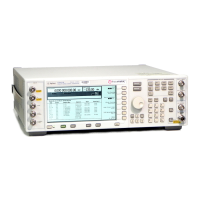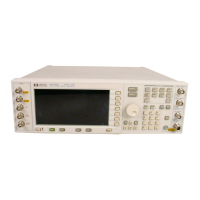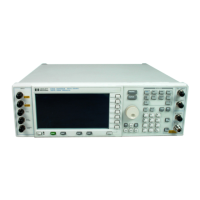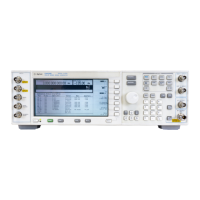22
www.agilent.com/find/esg
Symbol timing error
This impairment varies the symbol rate of the Bluetooth signal. Adding this impairment
adjusts the standard one Msymbol/second rate by the set amount.
Carrier frequency drift
This impairment adds a dynamic error to the transmission frequency. It is used to simu-
late a Bluetooth device’s carrier frequency varying during the transmission of a packet.
The frequency drift impairment repeats at the beginning of each timeslot, and occurs
across a period of time equal to the duration of the packet. Figure 27 illustrates the
carrier frequency drift impairment for a single-slot packet. This concept can be extended
to multi-slot packets as well. The maximum frequency drift deviation is user defined.
Sinusoidal drift
The carrier frequency drifts above and below its designated center carrier frequency in a
sinusoidal fashion. The sinusoidal drift rate is defined in the Rate pull-down menu.
• Single slot packet, drift rate = 1.6 kHz
• Three slot packet, drift rate = 500 Hz
• Five slot packet, drift rate = 300 Hz
The sinusoidal drift is automatically set according to the packet type chosen.
The drift is over the duration of the packet and returns to the start value after each packet.
Frequency deviation
Since packets are slightly shorter than the number of timeslots they occupy, they are not
fully impaired by the second half of the drift cycle. Therefore, it is recommended you test
separate positive and negative drift impairment cases by changing the drift deviation
setting (for example, 25 kHz and –25 kHz).
Initial phase
The initial phase of the sinusoidal frequency deviation can be adjusted by setting this field.
Set impairments to default
Sets all dirty transmitter impairments to the values specified by the Bluetooth test
specification.
Creating Signals
Figure 27. Sinusoidal carrier frequency drift impairment

